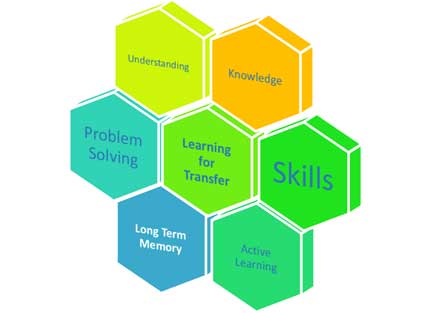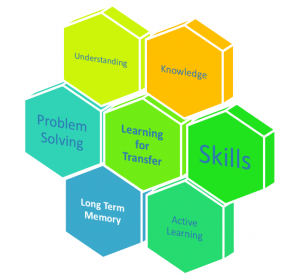Backwards Planning Professional Development for 1:1

I love the Understanding by Design (UbD) method for planning learning with the end in mind. This makes perfect sense, no matter what you teach – if your goal is to make sure that your students learn. (it’s not enough to say you “taught” it.) In my case, my learners happen to be teachers, and so modeling backwards planning when designing professional learning is essential.
Currently, I am working on a plan for professional learning to support teachers who may pilot 1:1 through BYOD “Bring Your Own Device” in their classes next year. In UbD, Stage 1 involves identifying the learning goals for transfer, understanding, knowledge, and skills, and an overarching essential question that can drive the learning. I love how thinking through these learning goals can spark ideas for the “performance assessment” – which in this case will be the teachers designing learning that is focused on learning goals, and then designing a performance assessment and activities to support those goals – which is where the technology comes into play.

Here are the goals I’ve drafted–what would you add?
Transfer Goal:
Teachers create learning ecosystems that motivate students to own the learning by using technology to support deeper, more personal learning.
Goals for Understanding:
►What is possible to do with technology that could not be done without it
►Understanding how to design learning that motivates learners to take ownership
►Understanding how to give learners voice and choice
►Understand that learning is a social endeavor
►Understand that learner questions and questioning are at the heart of learning
►Understand that real world problem solving motivates learners to reach higher
►Understand that the more they release control, the more students will own the learning
Tech & Learning Newsletter
Tools and ideas to transform education. Sign up below.
Goals for Knowledge
►Teachers know how to backwards design learning
►Know what it “looks like’ when students are using technology in transformative ways
►Teachers know how to design learning for authentic problem solving
►Teachers know the 21st century skills
►Teachers know how to facilitate, rather than just deliver learning
Goals for Skill
►Basic troubleshooting of devices
►How to use a core group of apps and tools for creating and connecting
►How to model, teach, assess and give students feedback on 21st century skills
Essential Question: How can we make the learning ecosystem meaningful for each individual learner?
cross posted at Innovations in Education
Nancy White is the 21st Century Learning & Innovation Specialist for Academy School District 20, providing professional development on 21st century skills and technology integration, and working with the IT-ES team to carry out the district’s 21st Century Learning Plan. Nancy served on an ad-hoc team to help with the integration of 21st century skills into Colorado’s revised content standards, and co-authored The Colorado Learner’s Bill of Rights. Read more at Innovations in Education.
